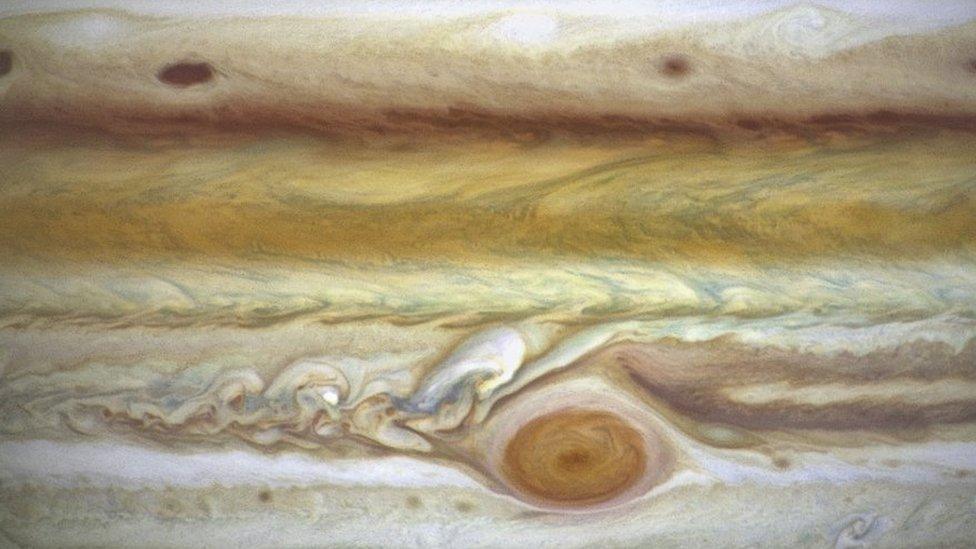Hubble Telescope: Check out these amazing pictures of gas giants
- Published
- comments

Hubble's 2021 images of Jupiter
Nasa's Hubble Space Telescope has completed its grand tour of the outer solar system and has captured photos of Jupiter, Saturn, Uranus and Neptune in amazing detail.
Robotic spacecrafts have been sending back snapshots of their visits to these four gigantic planets over the past 50 years, so scientists are able to see how their atmospheres have changed.
Hubble revisits these distant planets every year as part of the Outer Planets Atmospheres Legacy program, or OPAL.
Some of the changes they have seen this year have been unexpected, read on to find out what they discovered about these distant and mysterious planets.
What did they discover?
This year's images reveal that several new storms, nicknamed "barges" are spiralling on Jupiter and its famous Great Red Spot is similar to hurricanes and typhoons we have on Earth.
Researchers were expecting to see more white and beige tones on Jupiter's equator, but were shocked to see deeper orange colouring in Hubble's recent images.
It was a surprise as they were expecting the zone to lose its reddish layer.
They also noticed the appearance of several new storms above the equator.
Jupiter's Great Red Spot, was first observed in 1831, and it's twice as big as Earth!
Saturn's big bands are experiencing speedy and extreme colour changes in its northern hemisphere.
In the past, Hubble's images have allowed researchers to track Saturn's northern hemisphere's seasonal changes.
Pictures from the space telescope are much clearer than any taken from the ground which helps with the scientists' research.
"With Hubble's high resolution, we can narrow things down to which band is actually changing," said Michael Wong of the University of California, Berkeley.
"If you were to look at this through a ground-based telescope, there's some blurring with our atmosphere, and you'll lose some of those colour variations. Nothing from the ground will get visible-light images as sharp as Hubble's."
Photos of Saturn show extreme colour changes
Uranus images from October 2021 shows a lighter northern pole.
It's thought that the increase in ultraviolet radiation from the Sun is brightening up the polar region of the planet.
Uranus looks paler in the northern polar region
In images of Neptune a dark spot reveals a whirling storm which was recently found to be reversing direction.
The planet appears blue partly because red light is absorbed by its methane-rich atmosphere.
Neptune looks blue
Are you a space fan? What do you think of these amazing images from the solar system? Let us know in the comments.
- Published23 October 2021
- Published7 March 2018
- Published20 November 2018
